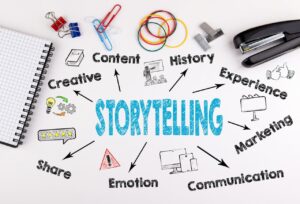Artificial Intelligence (AI) is increasingly influencing the field of creative writing, offering new tools and possibilities for authors. From generating story ideas to developing complex characters, AI technologies are transforming how stories are conceived and crafted.
AI in Story Generation
One of the most prominent uses of AI in creative writing is story generation. AI algorithms, particularly those using natural language processing (NLP), can create narrative structures, plotlines, and even full stories. “AI tools like OpenAI’s GPT-3 have demonstrated remarkable abilities in generating coherent and engaging text,” notes tech analyst Dr. Emily Collins. These systems analyze vast amounts of data, learning the patterns and structures that make up compelling stories.
For example, writers can use AI to overcome writer’s block by generating prompts or brainstorming ideas. “AI can serve as a creative partner, offering new angles or storylines that a human writer might not have considered,” says author Mark Thompson. However, while AI can produce text that resembles human writing, it lacks the innate creativity and emotional depth of a human author. This limitation means that AI-generated content often serves as a starting point, with human writers refining and expanding upon the AI’s output.
Character Development and Depth
Beyond plot generation, AI also plays a role in developing characters, a crucial aspect of storytelling. AI can help writers build multidimensional characters by generating detailed backstories, motivations, and personality traits. “Character development is enhanced by AI’s ability to analyze and mimic complex human behaviors and emotions,” explains psychologist and writer Dr. Laura Green. This capability allows for more nuanced and diverse character creation.
AI tools can also ensure consistency in character development, helping writers maintain continuity in long narratives or series. “Consistency in character traits and development is critical, especially in serialized storytelling,” notes literary critic James Lewis. AI can track character arcs and suggest adjustments to ensure that characters evolve in believable and engaging ways.
Ethical Considerations and Creative Control
The integration of AI in creative writing raises ethical questions, particularly concerning authorship and originality. “When AI generates text, who owns the copyright? The developer of the AI, the user, or the AI itself?” asks intellectual property lawyer Maria Lopez. This issue becomes more complex as AI-generated works become more indistinguishable from human-created content.
Additionally, there is concern about the potential loss of creative jobs as AI becomes more capable of producing high-quality written content. However, many experts argue that AI is more likely to complement rather than replace human creativity. “AI can handle repetitive or formulaic tasks, freeing up human writers to focus on more creative and innovative aspects of storytelling,” suggests AI ethicist Dr. John Martin.
The Future of AI in Creative Writing
Looking forward, the role of AI in creative writing is expected to grow, with advancements in machine learning and NLP enhancing AI’s capabilities. “Future AI systems may become even better at understanding context and nuance, allowing for more sophisticated and emotionally resonant writing,” predicts futurist Lisa Wong. This evolution could lead to entirely new genres or forms of interactive storytelling, where AI plays a central role in crafting and evolving the narrative.
Conclusion
AI is revolutionizing creative writing, offering tools that assist with everything from story generation to character development. While there are challenges and ethical considerations, the collaboration between human creativity and AI offers exciting possibilities for the future of storytelling. As AI technology continues to advance, it will likely play an increasingly integral role in the creative process, expanding the boundaries of what stories can be and how they are told.

